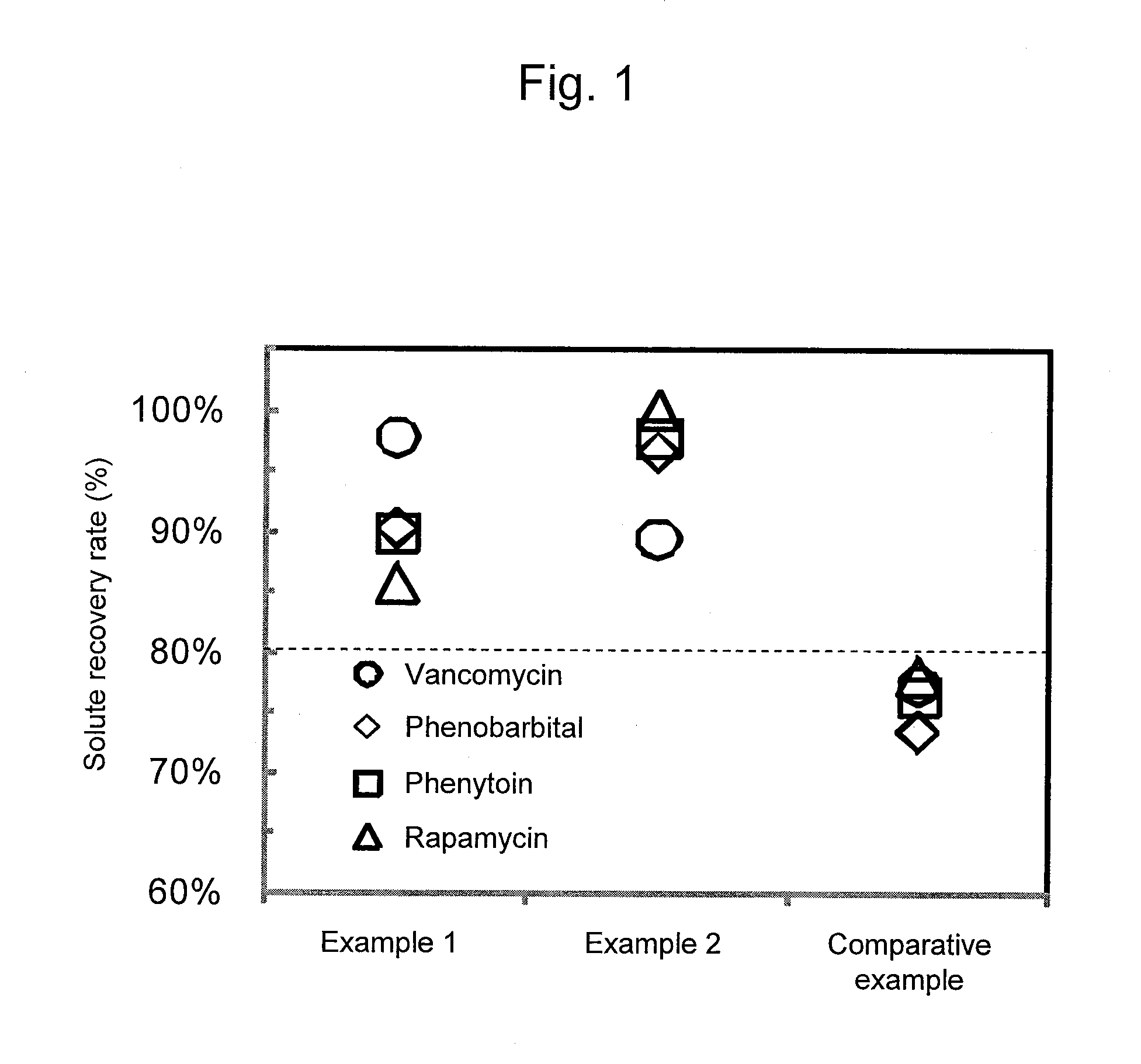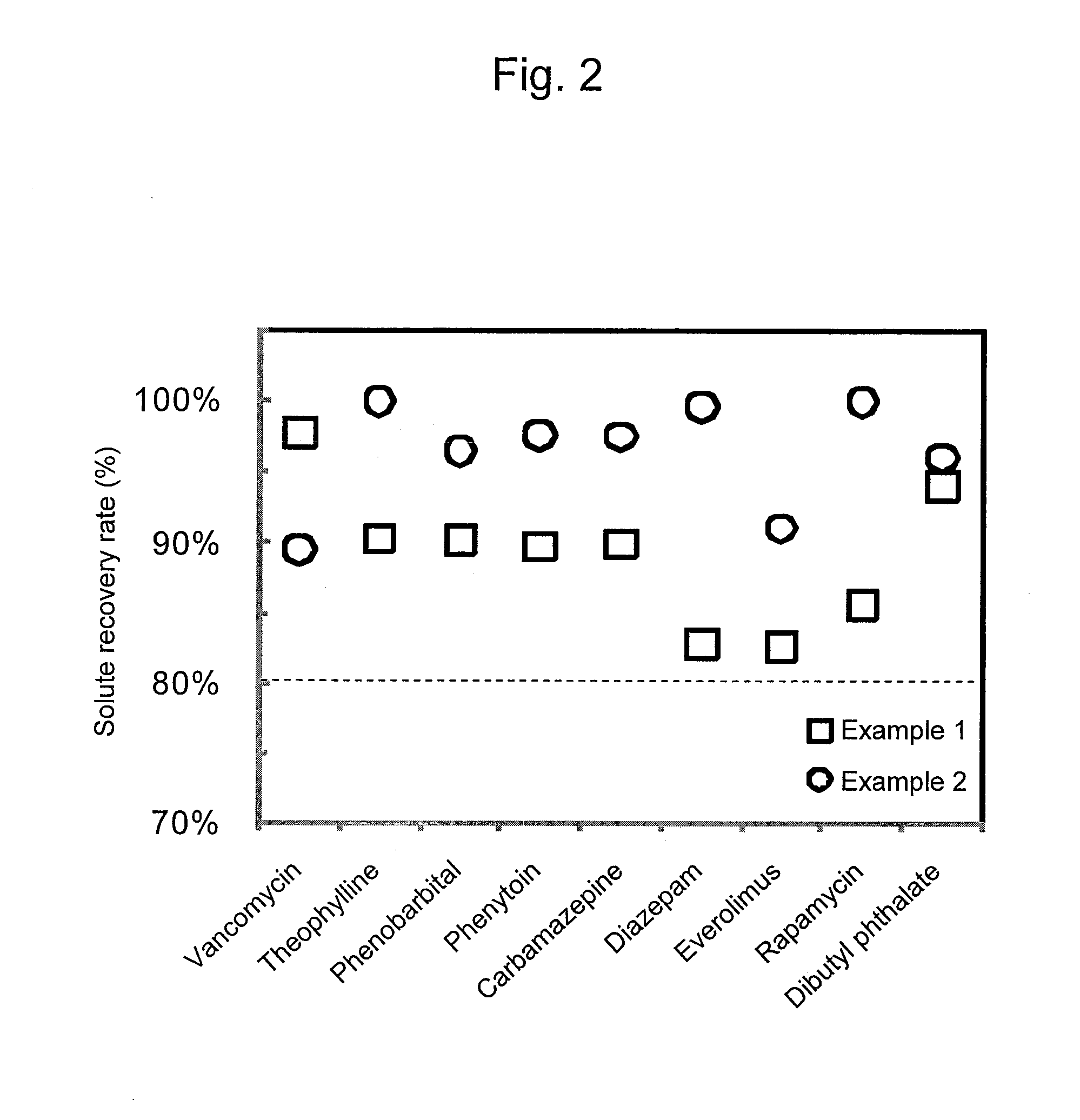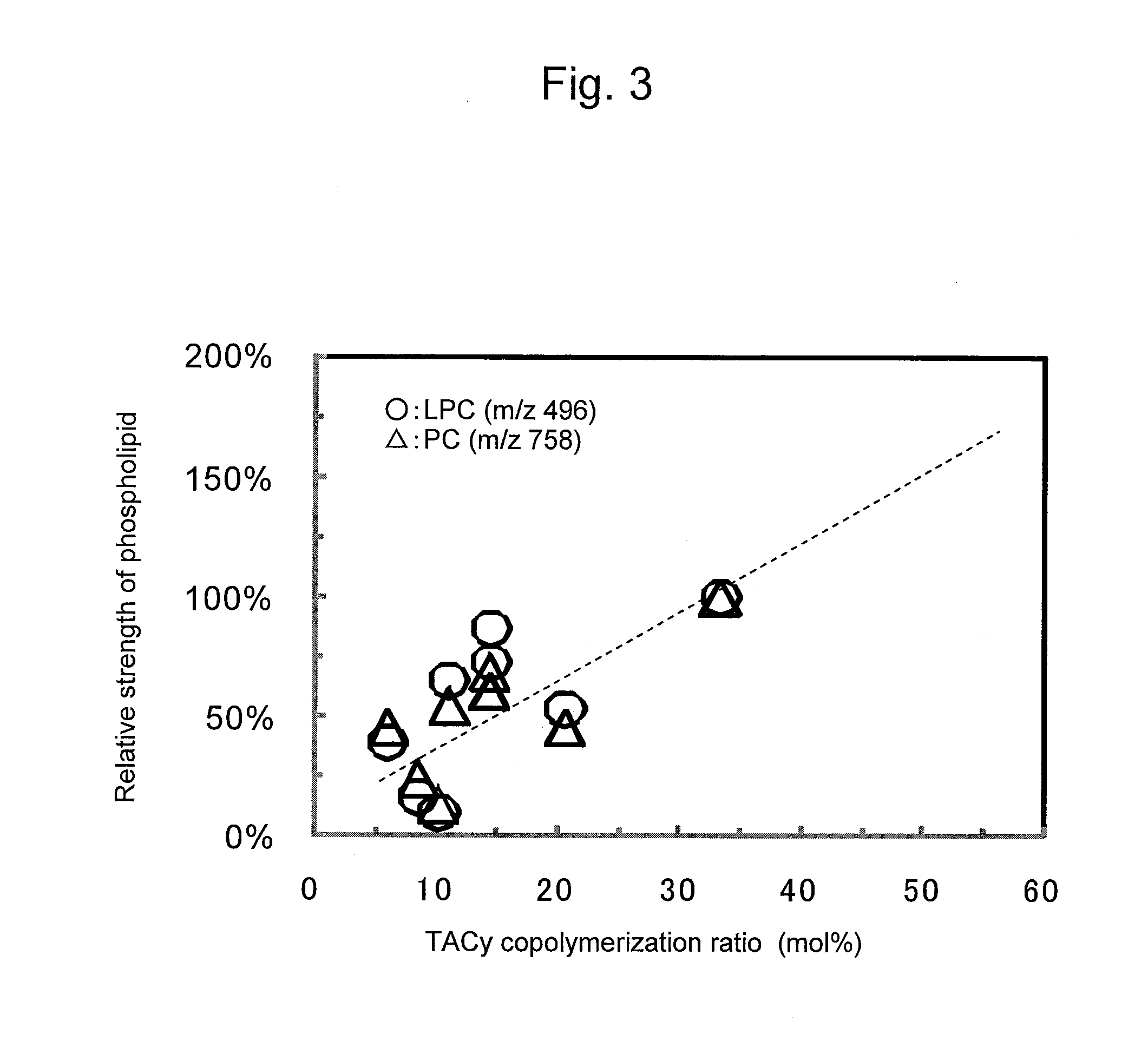Adsorbent and Method for Producing Same
- Summary
- Abstract
- Description
- Claims
- Application Information
AI Technical Summary
Benefits of technology
Problems solved by technology
Method used
Image
Examples
fourth embodiment
(Adsorbent )
[0164]The adsorbent according to the fourth embodiment has the physical properties described in [1-1. Hydrophobic resin], wherein a hydrophilic group(s) contains one or more types of backbone selected from the group consisting of an isocyanuric acid ester backbone, a cyanuric acid ester backbone, a hexahydrotriazine backbone, a maleimide backbone, and an imidazole backbone.
[0165]More specific examples of a backbone of a hydrophilic group(s) to be contained in the adsorbent according to the fourth embodiment include an N-phenyl maleimide backbone, a triallyl isocyanurate backbone, a triallyl cyanurate backbone, a 1,3,5-triacryloylhexahydro-1,3,5-triazine backbone, an N-phenyl maleimide backbone, and a 1-vinylimidazole backbone. Particularly the above examples are preferable as backbones of a hydrophilic group(s) to be contained in the adsorbent according to the fourth embodiment. One type of these examples may be contained independently, or two or more types of the same m...
fifth embodiment
(Adsorbent )
[0166]The adsorbent according to the fifth embodiment has the physical properties described in [1-1. Hydrophobic resin] is characterized in that a hydrophilic group(s) contains: one or more types of heteroatom selected from the group (1) consisting of an oxygen atom, a nitrogen atom, and a sulfur atom; and one or more types of structure selected from the group (2) consisting of an ether bond, an ester bond, a urethane bond, an amide bond, a thioester bond, a carboxyl group, an amino group, an alkylamino group, a dialkylamino group, and a hetero ring backbone, wherein the total heteroatom content (in the hydrophilic group(s)) is 30 mol % or more with respect to the total number of moles of atoms of the hydrophilic group(s).
[0167]A hydrophilic group(s) to be contained in the adsorbent according to the fifth embodiment contains one or more types of heteroatom selected from the group consisting of an oxygen atom, a nitrogen atom, and a sulfur atom. One type of these heteroat...
example 1
Preparation of Divinylbenzene-Triallyl Isocyanurate Copolymer
[0203]2.0 g of hydroxy propylcellulose (HPC (Aldrich) with an average molecular weight of up to 10,000 and viscosity of 5 cP (2 wt % aqueous solution, 20° C.)) and 100 mL of water were added to a 500-mL separable flask, and then the solution was agitated until complete dissolution. Next, 7.84 g (0.06 mol) of divinylbenzene (DVB, Aldrich, 80% divinylbenzene+19% ethyl vinyl benzene mixture), 14.95 g (0.06 mol) of triallyl isocyanurate (TAIC, Tokyo Chemical Industry Co., Ltd.)), 11.5 g of toluene (Wako Pure Chemical Industries, Ltd.), and 0.22 g of azoisobutyronitrile (AIBN, Tokyo Chemical Industry Co., Ltd.) were mixed. After complete dissolution, the solution was added to the separable flask. A nitrogen-induction tube and a cooling tube were connected to the separable flask. The solution within the polymerization system was agitated with agitating blades for 30 minutes while performing nitrogen substitution. After the solut...
PUM
| Property | Measurement | Unit |
|---|---|---|
| Fraction | aaaaa | aaaaa |
| Fraction | aaaaa | aaaaa |
| Fraction | aaaaa | aaaaa |
Abstract
Description
Claims
Application Information
 Login to View More
Login to View More - R&D
- Intellectual Property
- Life Sciences
- Materials
- Tech Scout
- Unparalleled Data Quality
- Higher Quality Content
- 60% Fewer Hallucinations
Browse by: Latest US Patents, China's latest patents, Technical Efficacy Thesaurus, Application Domain, Technology Topic, Popular Technical Reports.
© 2025 PatSnap. All rights reserved.Legal|Privacy policy|Modern Slavery Act Transparency Statement|Sitemap|About US| Contact US: help@patsnap.com



